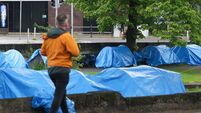A destructive legacy; Redundant monument to tribalism

It may be a reflection of the times we live in when so many people imagine that by removing the symbols of our warts-and-all past we can remake it and dress all of our tomorrows in a brighter frock.
It must be assumed, or at least hoped, that Mr de Blasio realises this would be like painting over dry rot spreading through a house — a critical, lethal issue has been hidden from view but it has not been resolved. It may be that he is trying to show how preposterous an idea is by pointing out its extreme and ultimate conclusion. However, he may not
















